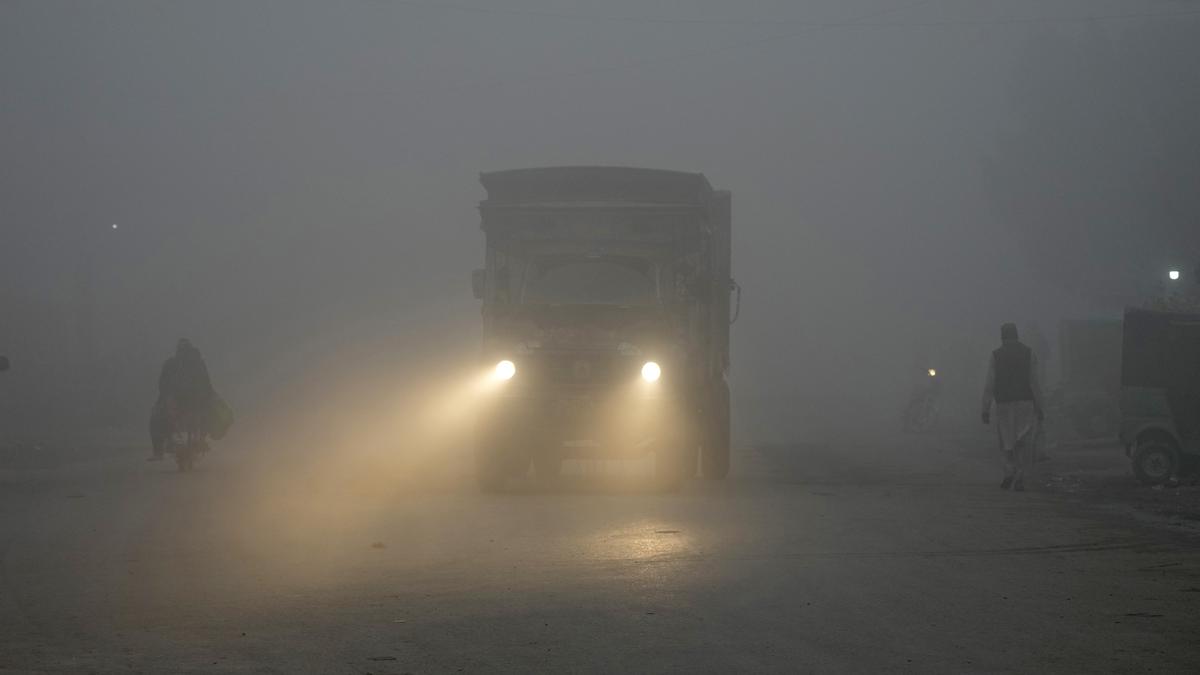The streets of Lahore are choking under a toxic blanket of smog, with air quality reaching unprecedented hazardous levels, putting the city’s 14 million residents in peril.
Smog stings eyes and burns throats, and for many, the only refuge is staying indoors, though even that offers little relief. With air purifiers a luxury few can afford, people like Rafia Iqbal, a primary school teacher, are facing a growing health crisis, The Express Tribune reported.
Also Read: Pakistan blames India for worsening smog in Lahore as air quality index hits record high
“The children are constantly coughing, they have constant allergies,” she said. “In schools, we saw that most of the children were falling sick.”
The pollution crisis has grown so severe that the Punjab provincial government, which includes Lahore, has temporarily closed schools until November 17 to minimise children’s exposure, particularly during their morning commutes when the pollution is most concentrated.

However, for residents like Muhammad Safdar, a 41-year-old advertising professional, life has become nearly impossible. “We cannot move around, we cannot go outside, we can do nothing at all,” he said.
Lahore regularly ranks among the world’s most polluted cities, and this month, the city has exceeded hazardous levels on the Air Quality Index (AQI), with values often soaring above 1,000. In Multan, about 350 kilometres away, AQI levels passed a staggering 2,000 — a height that left many residents in disbelief.
The severe pollution is not just an inconvenience, but a health crisis that affects the most vulnerable groups in the city, including children, the elderly, and those with respiratory issues. With parks, playgrounds, and other recreational areas closed, and bans in place on polluting vehicles and businesses, Lahore is trying to mitigate the damage, reported The Express Tribune.

However, the city’s grim reality is underscored by the absence of effective solutions. Air purifiers, often priced at $90 or more, are out of reach for most families. “Preventive measures should have been taken. It’s a yearly occurrence,” Mr. Safdar said.
“Obviously, there is something missing in their solution.” The toxic haze blanketing Lahore is primarily caused by a mix of emissions from industrial factories, vehicle exhaust, and seasonal agricultural stubble burning. These pollutants are trapped by cooler temperatures and slow-moving winds, leaving the city at the mercy of a persistent, unhealthy atmosphere.
Also Read: Pakistan’s Punjab govt declares smog ‘health crisis’, uses artificial rain to combat pollution
According to the World Health Organisation (WHO), exposure to such high levels of pollution can lead to strokes, heart disease, lung cancer, and respiratory diseases. Children, babies, and the elderly are especially at risk.
In hospitals across the city, doctors are witnessing a surge in patients suffering from the effects of the smog. Qurat ul Ain, who has been practicing medicine for 15 years, reported a noticeable increase in patients this year.
“This year smog is much more than previous years, and the number of patients suffering from its effects is greater too,” she said. Many arrive with laboured breathing, coughing fits, and reddened eyes, particularly the elderly and children who have been exposed to the toxic air while commuting.
“We tell people not to go out and otherwise to wear a mask,” she added. “We tell them not to touch their eyes with their hands, especially children.”
The pollution levels in Lahore have exceeded the WHO’s recommended levels by dozens of times, with fine particulate matter (PM2.5) concentrations reaching dangerous heights. Climate activist Alia Haider calls for greater awareness about the dangers of smog, especially for children living in already polluted areas.
“We are stuck in our own poison,” she said, describing the city’s atmosphere as “like a cloud of gas over the city.”As residents continue to endure the smog, the Punjab government’s efforts to alleviate the situation have been largely unsuccessful.
Last year, the government tried artificial rain, and this year, trucks with water cannons sprayed the streets, but these measures have not yielded significant results, The Express Tribune reported.
“The government needs to do more. It’s not enough,” Ms. Haider said, emphasising the urgency of tackling the problem. Until more sustainable solutions are found, the residents of Lahore will continue to live under the toxic shadow of smog, hoping for change that may come too late for many.
Published – November 17, 2024 11:53 am IST




